The Enchanting World of Pheasant Birds
1. A Glimpse into the Charm of Pheasants
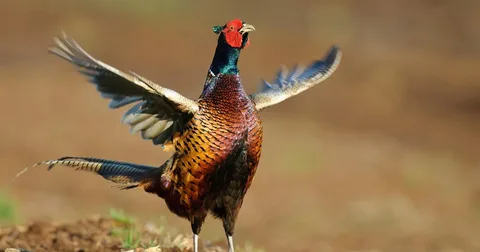
Among the avian wonders of the world, pheasants stand out for their dazzling plumage, regal posture, and graceful presence. These birds, belonging to the family Phasianidae, have long fascinated humans with their striking colors and symbolic meanings in different cultures. Known for their elaborate tails, shimmering feathers, and captivating courtship displays, pheasants inhabit a wide range of environments—from the dense forests of Asia to the open grasslands of Europe and North America. Their beauty is not only visual but also deeply woven into folklore, traditions, and even art across centuries.
2. Stunning Plumage and Distinctive Features
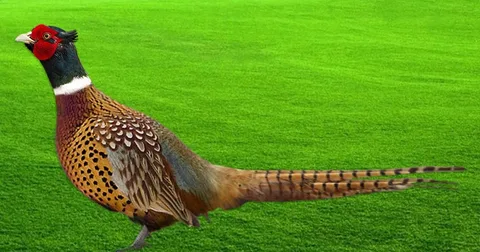
The most remarkable trait of pheasants lies in their plumage, which displays an extraordinary palette of colors. Males, in particular, are known for their radiant feathers that shimmer with hues of emerald green, copper, gold, and violet. Their elongated tails, often patterned with bold stripes or spots, add to their majestic appearance. While males are flamboyant, females are more subtly dressed, usually in brown or earthy tones to provide camouflage while nesting. This sexual dimorphism highlights the delicate balance of survival and attraction within their species. Pheasants also have strong legs, sharp claws, and short, rounded wings that allow for swift bursts of flight when startled.
3. Diversity Across Species and Habitats
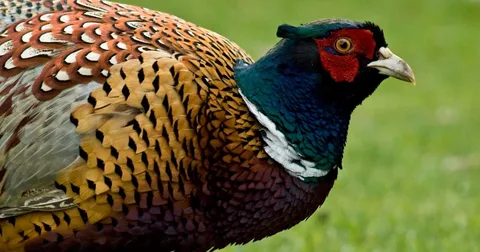
“Pheasants boast a wide variety of species, each showcasing distinct colors, traits, and survival strategies that set them apart in the natural world.” The Common Pheasant (Phasianus colchicus), native to Asia but introduced widely across Europe and North America, is perhaps the most familiar. Meanwhile, the Golden Pheasant of China is admired for its brilliant red and golden plumage, resembling a work of art in motion. The Himalayan Monal, with its iridescent feathers shifting from sapphire blue to bronze under sunlight, holds the honor of being Nepal’s national bird. Pheasants thrive in a variety of habitats—woodlands, meadows, farmlands, and high-altitude forests—making them one of the most versatile bird groups in the world. Their adaptability has helped them spread far beyond their native lands, though some species remain highly localized and rare.
4. Behavior, Diet, and Courtship Rituals
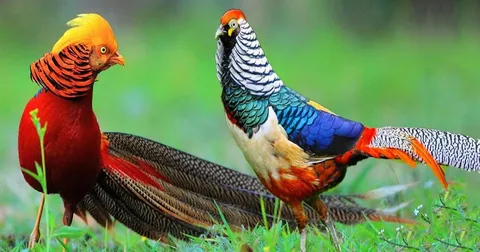
Pheasants are ground-dwelling birds that spend much of their time foraging for food. Their diet is diverse, including seeds, grains, berries, insects, and small invertebrates. This omnivorous nature supports their survival in both wild and semi-cultivated landscapes. What truly sets them apart, however, are their fascinating courtship displays. Some species even perform short dances or wing-flapping displays to showcase their strength and vitality. These rituals highlight not only the aesthetic splendor of the birds but also the evolutionary importance of beauty as a tool for survival and reproduction.
5. Symbolism, Conservation, and Human Connection
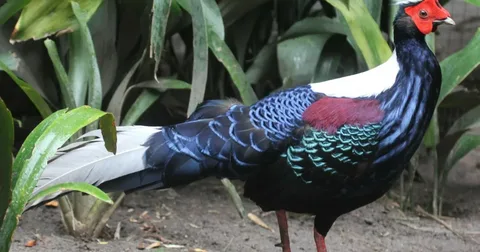
Throughout history, pheasants have symbolized beauty, prosperity, and nobility. In ancient China, they were associated with refinement and high status, often appearing in traditional paintings and embroidered designs. In European culture, they were prized as game birds, representing both prestige and abundance. Despite their symbolic prominence, several pheasant species face threats due to habitat destruction, hunting, and climate change. Conservation efforts are crucial to protect these birds, especially the rare and endangered ones like the Cheer Pheasant and the Edwards’s Pheasant. Wildlife reserves, breeding programs, and awareness campaigns play vital roles in ensuring that future generations can witness their brilliance. Moreover, eco-tourism centered around pheasant habitats offers an opportunity to appreciate their natural beauty without harming their existence.
Conclusion
Pheasant birds are living jewels of nature, blending elegance, resilience, and cultural significance. Their radiant feathers, diverse species, and captivating behaviors make them symbols of nature’s artistry. Protecting pheasants is not just about preserving a bird but about safeguarding a heritage of beauty that has inspired human imagination for centuries. By valuing and conserving them, we honor both the birds themselves and the ecosystems they enrich.
 Birds Drawing Birds Drawing
Birds Drawing Birds Drawing
